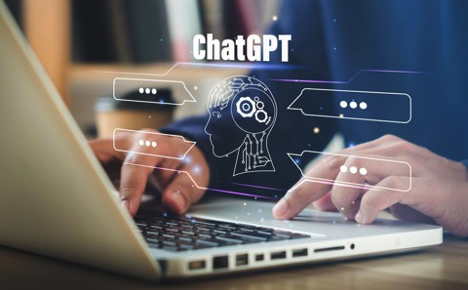
A powerful artificial intelligence (AI)-powered chatbot called ChatGPT employs machine learning and natural language processing (NLP) to comprehend and reply to human input. Users of ChatGPT have access to a virtual assistant who can assist them with a variety of tasks, from obtaining information to making reservations and scheduling appointments.
What is ChatGPT?
ChatGPT is an AI chatbot that has been educated on a vast quantity of data, allowing it to comprehend the subtleties of human language and give precise answers to user inquiries. You can reach the chatbot through the ChatGPT app, available for download on Android, iOS, and web platforms.
Some additional quick facts about ChatGPT are as follows:
- ChatGPT is one of the most significant language models, with a great size of over 175 billion parameters.
- ChatGPT is pre-trained, meaning all the setup and configuration work has already been completed.
- With its many linguistic features and versatility, ChatGPT can perform simultaneous activities like translation, summarization, and question-answering.
- ChatGPT is very responsive and offers prompt solutions to queries or tasks like a chatbot used for online commerce.
How Does ChatGPT Function?
ChatGPT combines machine learning, natural language processing (NLP), and deep learning techniques to process user inputs and deliver pertinent responses. The chatbot has been educated on a vast quantity of data, allowing it to understand the context of user inquiries accurately.
When a user enters a question, ChatGPT analyses it using its NLP algorithms to extract pertinent keywords and phrases. The most pertinent response is then given to the user by the chatbot after it compares the user's question to its library of pre-built answers.
Alternatives to ChatGPT
Market-available alternatives to ChatGPT include BERT, GPT-2, RoBERTa, XLNet, and T5. These systems also use NLP and machine learning algorithms to comprehend and react.
In language modeling and natural language processing, there are several alternatives to ChatGPT. Many of these options include:
- BERT: Bidirectional Encoder Representations from Transformers (BERT), a language model created by Google, trains deep neural networks using a method known as a transformer. BERT has succeeded in various natural language processing tasks, including sentiment analysis, text classification, and question answering.
- Generative PT-2: A language model called Pre-trained Transformer 2 (GPT-2) was created by OpenAI, which made ChatGPT. It is renowned for its capacity to produce high-quality human-like writing. GPT-2 has been utilized for various natural language generation tasks, including chatbot development and tale generation.
- RoBERTa: Based on the transformer architecture, RoBERTa is another language model created by Facebook AI Research. Roberta has been demonstrated to outperform BERT on several natural language processing tasks, and she excels in tasks involving the comprehension and creation of text.
- XLNet: Google created the language model known as XLNet, which is built on the transformer-XL architecture. Because it employs a permutation-based training methodology, XLNet is singular in that it can simulate the dependencies between any two input sequence permutations. Natural languages processing tasks like text categorization, language modeling, and machine translation have all been completed with XLNet.
- T5: Text-to-Text Transfer Transformer (T5), a language model built on the transformer architecture, was created by Google. T5 is unique because it can conduct multiple NLP operations by converting the input text into a different format, including text classification, machine translation, and summarization.
These ChatGPT substitutes are powerful language models that have been demonstrated to work effectively on various NLP tasks. The precise task at hand and the resources on hand determine which model should be used.
What are ChatGPT's restrictions?
When it comes to toxic reactions, ChatGPT has its limitations. The program won't respond to queries in this category because it was mainly created to prevent offering harmful or unhealthy responses.
Furthermore, the caliber of the input that ChatGPT receives significantly impacts the caliber of its responses. This indicates that knowledgeable prompts will provide better answers than subpar ones.
The fact that ChatGPT's responses are only sometimes accurate is another drawback. Even while the computer is trained to give responses that make sense to people, it can still provide inaccurate—or even wholly absurd—answers.
Because of this, many users have found that ChatGPT can give false results, a crucial restriction to be aware of when using this program.
Conclusion
ChatGPT is an advanced AI-powered chatbot that uses NLP and machine learning techniques to comprehend and react to user inputs. The software can be used for various functions, from answering general knowledge questions to providing weather updates and booking reservations.
It is accessible on Android, iOS, and web platforms. In addition to AI and API alternatives, several ChatGPT substitutes are on the market, including IBM Watson and Microsoft Bot Framework. Companies and organizations can use ChatGPT and its alternatives to boost lead generation, enhance customer service, and streamline operations.
Share this post
Leave a comment
All comments are moderated. Spammy and bot submitted comments are deleted. Please submit the comments that are helpful to others, and we'll approve your comments. A comment that includes outbound link will only be approved if the content is relevant to the topic, and has some value to our readers.

Comments (0)
No comment